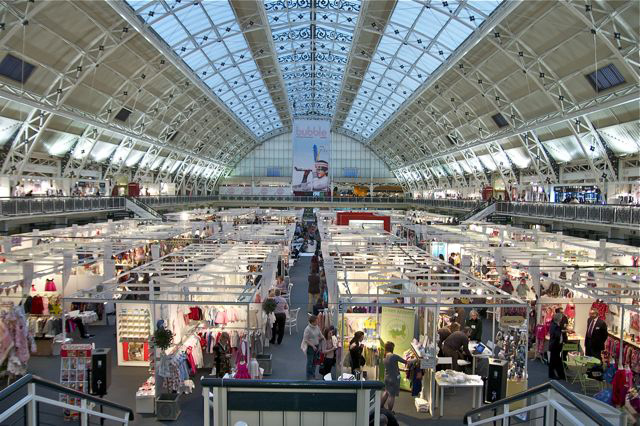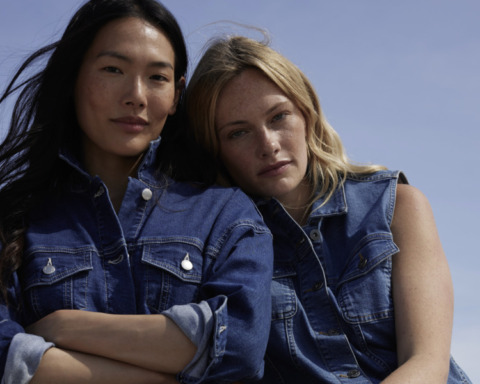Bevor Sie Einkäufer oder Händler kontaktieren, müssen Sie zunächst Ihre Hausaufgaben machen. Analysieren Sie genau wer ihre Zielgruppe ist, wer ihre Konkurrenten sind und in welchen Geschäften Ihre direkten Mitbewerber bereits verkaufen.
first step: IDENTIFYING THE BUYERS
Looking at your competitors’ websites is a useful way of identifying stores you could be contacting. Don’t forget the importance of the internet for searching for contact names of buyers; search for conferences, events related to fashion as they often confirm these details. Also check through trade journals and B2B magazines, which often give names of buyers in interviews or on shop portraits.
Think online stockists as well as bricks and mortar stores.
Also think ‘outside of the box’. Are there stores that don’t carry your particular type of product line, that may be interested in diversifying a little? Stores are always looking for something new. Offer them f.e. a pop up event.
Contact some of the organisations listed in our ‘Getting Advice’ factsheet. Many of them will have Meet The Buyer Events, which can be great for networking.
Switchboards at the larger stores will not give out names, so you will need to address any correspondence to the ‘Womenswear Contemporary Buyer’ or whichever department is relevant to you. Smaller stores may be more helpful. But remember, everyone is busy. If they give you details of an Assistant Buyer, rather than the Head Buyer, try to be persistent to get the Head Buyer’s details. But don’t make a nuisance of yourself; people have long memories.
You also need to know how the buying world functions. Buyers often spend a large proportion of their season’s budget before they even get to the tradefairs. So this is key to your timing. Try to see buyers about a month before the key tradefairs. If you leave it much later, your call will just be wasted. For example, there’s no point in trying to contact buyers during London and Paris Fashion Weeks. The buyers will all be busy trying to see the shows and visiting the 20-30 showrooms on their hectic schedule.
It’s unlikely that you can afford to exhibit at any of the international tradefairs in your first year, but do try to attend so that you can be networking. Check on entry criteria. Not all tradefairs allow non buyers or press in.
We are all busy, and bombarded daily with 100s of unwanted emails. So you may have a limited opportunity to attract the attention of a buyer once you have identified him/her.
You can try emailing – but there will need to be something catchy in the email title for them to bother opening it.
You can try hand-delivering or posting something to the buyer. But make sure it is not just a letter. Make an impact. The packaging needs to make them curious enough to open the envelope/package; and when they open it, you want them to respond with ‘This is interesting. I’ll look out for them’. You might have included a postcard or lookbook promoting your collection, or maybe a beautiful small sample of textile – followed up a couple of weeks later with a postcard or lookbook.
IT IS VITAL THAT YOU RESEARCH THE MARKET TO MAKE SURE YOUR PRODUCT
IS SPECIAL, AT WHATEVER LEVEL, AND THAT IT IS DIFFERENT ENOUGH FROM THE HUNDREDS OF COLLECTIONS THAT ARE ALREADY OUT THERE.
If you are lucky enough to get an appointment, make sure you are on time, completely prepared and as professional as possible. You might only get 15 minutes of their time and may not get a second chance. Depending on what product type you design, take along the following:
– 3-4 key pieces from your collection
– Your portfolio
– A press release
– Any press cuttings (can also include online coverage)
Be clear about your product: what sort of volumes can you produce?; what wholesale price are you aiming to sell for?; and importantly – will it sell in their store once their 270% markup is added? (note that this figure varies from store to store, but it is a useful indicator).
Also be ready to negotiate and think on your feet. It’s unlikely that a buyer will buy from you in the first season they meet you. They’ll probably agree to watch you over the next season and may be interested in meeting up again next season. Hopefully though, your product is very different and they’ll be desperate to have you in their store.
Lack of orders can be really soul destroying. How much do you want to be in their store? How much do you need to secure your first IMPORTANT stockist? We don’t encourage designers to offer goods on a Sale- Or-Return basis but if the store is really important, you might need to think about offering SOR terms in the first season – for a limited number of pieces. You will need to have your own funding in place to make sure you can afford to take this risk, but it could make the difference between having ONE stockist that you can list and promote, than no stockist at all.
MAKE AN IMPRESSION AND GET EVERYONE’S BUSINESS CARD. YOU NEVER KNOW WHO COULD BE USEFUL TO YOU IN THE FUTURE.
Here>> we cover many of the key tradefairs for childrenswear & lifestyle products and further afield, but it does not cover every tradefair worldwide, as it is unlikely that you would have the resources to be travelling to many international tradefairs in your first year or two or setting up your business. It needs some good research which fair will be the one. It’s is very difficult to tell. Ask for a special arrangement for the beginners, newcommers. Most fairs have specil offers to start with and test the buyers‘ audience.
ALSO BE READY TO NEGOTIATE AND THINK ON YOUR FEET. IT’S UNLIKELY THAT A BUYER WILL BUY FROM YOU IN THE FIRST SEASON THEY MEET YOU. THEY’LL PROBABLY AGREE TO WATCH YOU OVER THE NEXT SEASON AND MAY BE INTERESTED IN MEETING UP AGAIN NEXT SEASON.








